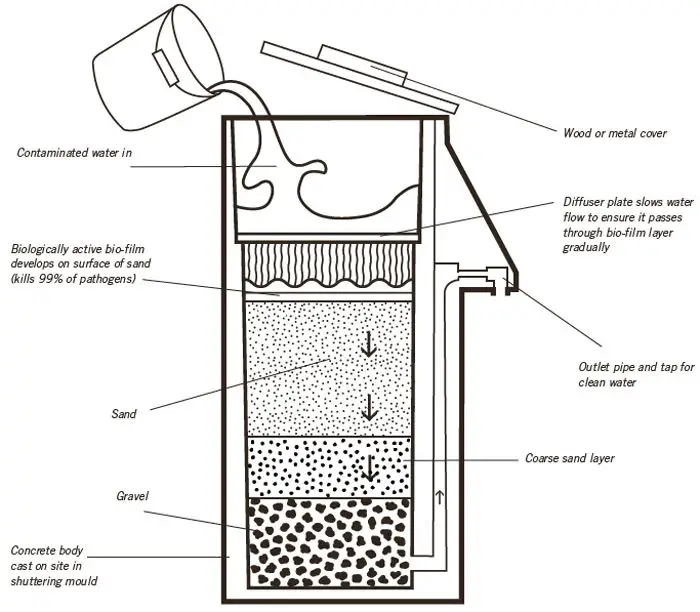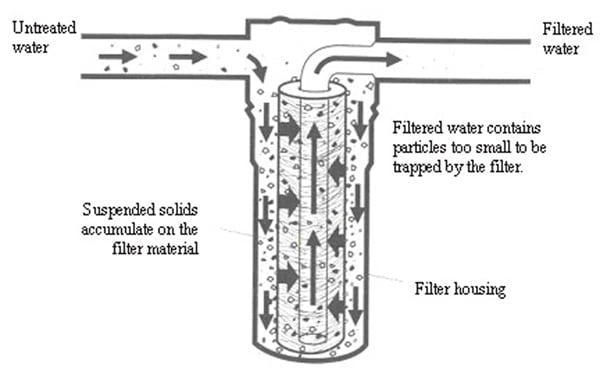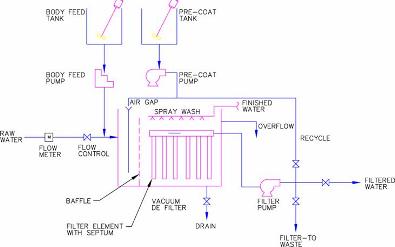
Want to learn more about algaecide? Read on to find out when to add algaecide to your pool maintenance routine and other helpful tips.
Sand filters, cartridge filters, and D.E. filters. Regardless of the filter you own, your filter does a lot of the dirty work for you. The job of a filter is to take the dirty water from your pool and clean it to the highest degree possible. The cleaned water is then injected back into the pool. However, a filter is prone to getting clogged and needs to be cleaned quite often. Cleaning your filter is vital to keeping your pool clean and working properly. Today on Pool Calculator we are going to be discussing how to clean a pool filter. This article will be split into three different sections, getting into the specifics on all three types of pool filters. These filters include sand filters, cartridge filters, and diatomaceous (D.E) filters.
Filters are important for your pool’s health, but it isn’t everything. Click here for a buyers guide on pool vacuums.
Disclaimer: It is useful to clean your filters as often as possible. In a perfect world once a week is amazing. The more you clean your filter the better it will work. Cleaning your filter often also means you are less likely to run into future problems like murky or dirty water.
Sand filters are not the easiest thing to clean. However, they do not often require as much maintenance as other types of filters. These filters can actually be cleaned in two different ways; backwashing, or a full chemical cleaning. Backwashing is very simple in concept and execution. However, your pool will require a full chemical cleaning at least once per year.
Backwashing is the process of sending water back through in the “out” end and back through the “in” end of the filter to unclog it. This process allows water to grab all the dirt, oil, and other gunk to be removed. This process will unclog your filter and allow it to run smoothly. This is as long as all other parts are replaced and up to date. This is done by usually setting the filter to “backwash”. This setting sucks the water (combined with a filter cleaner of some sort) through the filter to clean itself.
This backwashing can be combined with a chemical process to allow a full clean for your sand filter. This is done by backwashing once for 3-5 minutes, and then pouring in cleaner into the strainer of the filter. This will do its job and will need to be left for at least 8 hours. Once this is done, more cleaning can be done. After waiting, backwash again for another 3-5 minutes. This process will allow your filter to clean itself. This process will also give a chemical treatment to break down particles. The last backwash will allow for a “rinsing” of the filter. Soon after you can reattach the filter to your pool’s pump and get back to enjoying the water.

Cartridge filters are almost just as easy to clean as a sand filter. This is because all cartridge filters have a removable “cartridge” installed. This means that you usually can just remove, rinse, and insert the cartridge back into the filter system.
Once you turn off the pool pump and remove the cartridge, all you will need is a garden hose for water. This and some pool cleaner will be a perfect duo for the job. If all parts are looking in good shape, simply just rinse the cartridge out with the hose and a filter cleaner to remove all dirt and debris. It is important to get in between the pleats to make sure the filter can work to its full potential. The cartridge can then be inserted back into the filter and reattached to the rest of the pool system for further use.
One of the parts that is most important to inspect is the O-ring on the filter tank. The O-ring is a seal for the filter that makes sure everything is secured and running in a streamlined manner. This part is incredibly important because you want to avoid water leaks. If the O-ring looks worn or you are experiencing leaks or a lack of pressure, it is likely time to replace it.

The process of cleaning a D.E. filter is a combination of both a cartridge and a sand filter. This is because you can simply rinse the filter like a cartridge filter. Also, you will need to perform backwashing on the filter that will get those hard to reach places. A combination of these two tactics is usually needed to guarantee a full cleaning.
Usually, you will start with the backwashing feature on the filter. This will remove a lot of the internal debris. Then, you will need to clean the grid of the filter with a hose and filter cleaner. The grid needs to be individually cleaned to make sure the clean water can get through, and to keep the filter working correctly. You can also choose to clean and treat the filter using muriatic acid. Muriatic acid is used to balance the alkalinity and pH of the water. All of these processes combine for a process that is more complicated and hands-on than the other filter cleaning but does a better job.

Overall, cleaning your filter is a very simple process. But it is incredibly important. Filters are the heart of your pool cleaning team and are the key to keeping your pool healthy. One of the biggest signs that your filter is due for a cleaning is your water becoming cloudy. This shows that the filter is no longer able to perform its job in an efficient manner. However, it is still recommended to clean your pool filter at least once a month. This is to eliminate problems before they exist. The goal is to make sure the water you swim in is always clean and safe for everybody.
Check out more maintenance and troubleshooting articles from Pool Calculator.

Want to learn more about algaecide? Read on to find out when to add algaecide to your pool maintenance routine and other helpful tips.

In this quick guide, we’ll answer the question “can you over shock a pool” and unveil the factors to consider when shocking a pool.

Maintaining both pH and total alkalinity in your swimming pool is important for keeping your pool properly sanitized and non-corrosive. Total alkalinity is to pH what cyanuric acid is to free chlorine. Total alkalinity stabilizes pH levels. The ideal pool pH level is 7.4 to 7.6. The ideal total alkalinity level is 80 to 120 ppm.

The Association of Pool and Spa Professionals recommends free chlorine levels for both swimming pools and hot tubs be kept between 2.0 and 4.0 ppm. However, the Center for Disease Control recommends free chlorine stay above 1 ppm in pools and 3 ppm in hot tubs.